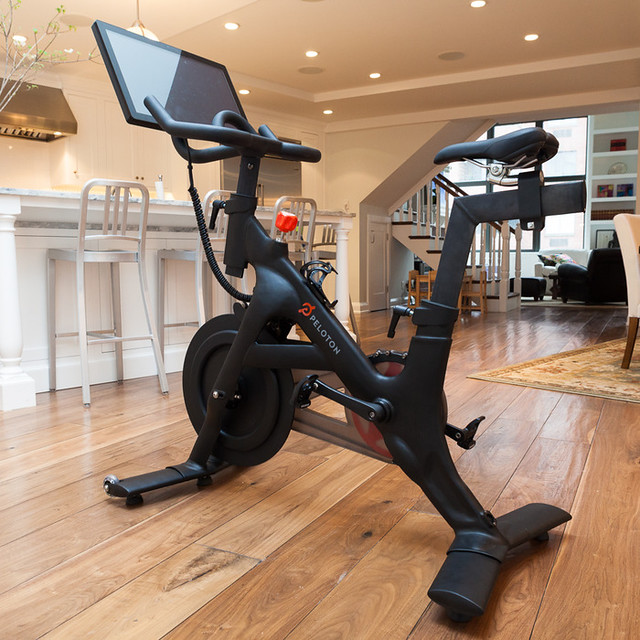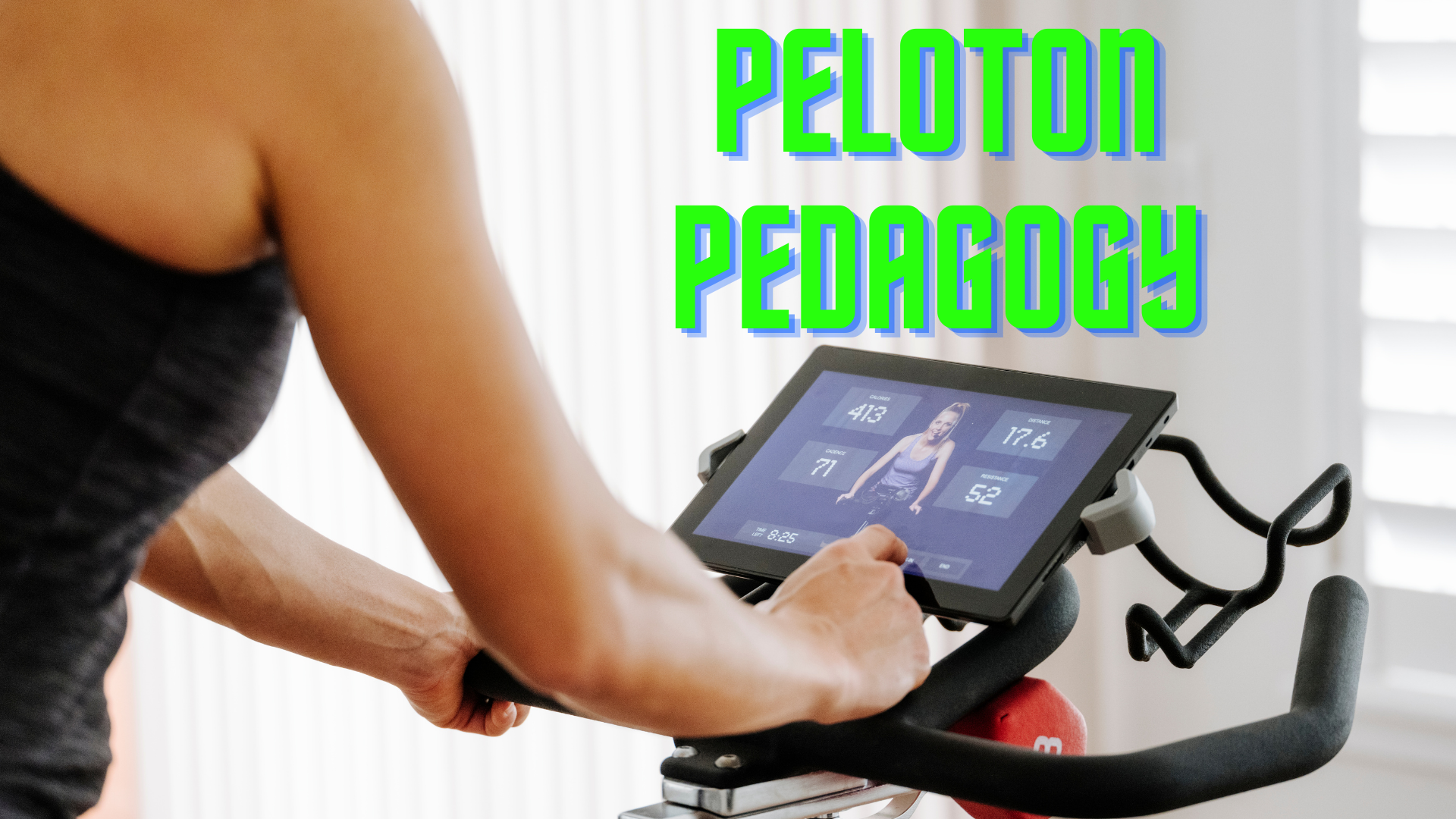I recently moved to an area that isn’t always conducive to outdoor running (Medicine Hat Alberta). The winters can get very cold (-30 °C/-22 °F) and the summers can get very hot (+40 °C/104 °F). I usually run for exercise so this presented a small problem. How could I get my daily fix of cardio?
Enter the Peloton

I’ve always enjoyed mountain biking and have taken a few spin classes that I really enjoyed. My wife and I decided to take the plunge and make the investment in a Peloton exercise bike. For those of you who don’t know, a Peloton bike is a spin bike with a touch screen. You set up a profile and from there you decide how long you want to ride, what type of music you like, the type of ride you want to do (Hills, Intervals, Tabata, etc.). There also are a bunch of instructors you can choose from. Some are super intense, some are chill, some are funny, some are serious; there is a personality for every rider out there. You can choose live rides, pre-recorded rides, or previously recorded rides. I was hooked right from the beginning. As I lay gasping for breath (and life) at the end of a ride (a 30 min classic rock ride) I started thinking that there is a lot higher ed could learn from these exercise apps so I did what I always do when I have a new idea; I tweeted about it:
I explored it a bit in the thread. I also read a lot of great comments, but I felt like there was more to unpack.
What is Peloton doing right?
These are the top 5 that I felt deserved unpacking and exploration.
1. Set up as Asynchronous/Synchronous
What they do: You can decide how you want to engage with the rides. You can attend a live session with other riders (the last ride I was on had over 3000 riders), or you can pick from hundreds of pre-recorded or recorded rides. In pre-covid time you could actually ride live in-studio as well. As the “student” I decide how I want to engage with the ride. Some mornings I can get to a live ride but sometimes I can’t make them. So I log in later and take the same ride just not live.
What this means for us: This setup is not unlike the Hyflex model of teaching. Students can choose how they wish to engage with the course. At the end of the day as long as the objectives are hit, should it matter if the content is consumed live?
2. Tell a story
What they do: Some of my favourite instructors at Peloton use themes and stories throughout the ride. At the end of the day, the outcome is to get exercise, but it is a lot more fun when it has an 80’s music theme, movie theme, party theme. The good ones will weave a story in and out of the ride.
What this means for us: Start using stories more when teaching. It can be as simple as using examples to re-enforce subject matter. You could also use themes to engage the students. I tried a 90’s music theme the other week. This is for a marketing course and has nothing to do with the subject matter but it was fun to have the music playing at the beginning of the class. Throughout the class, I would ask random questions just to see if they were listening. We had a lot of fun and now I get requests for different themes for the week.
3. The instructors are excited and engaging
What they do: The good ones are pumped to be there. It might be over the top sometimes but it works. They are cracking jokes, telling stories, hooting and hollering and are just fun to be around.
What this means for us: Let’s face it, the camera robs us of our energy and that translates through the screen. 120% of yourself helps. It feels uncomfortable at first but you may find that you enjoy it just as much as your students will.
4. Engage with the riders
What they do: Instructors give shout-outs to the live riders. I have even seen some of them acknowledge riders that aren’t there who normally are. They celebrate people’s milestones (500th ride), they pay props to names (ride4fries is a favourite of mine). As a live rider I am on the edge of my bike seat waiting to see if my name is going to be called (Not yet but my birthday is coming up).
What this means for us: In your live session call acknowledge the students as they log in. Ask questions. Acknowledge efforts. The more you acknowledge them, the safer they will feel when it comes time to ask questions. It is a trust-building exercise. Use the chat feature and ask the students to answer back using it as well.
5. Gamification
What they do: Almost every ride unlocks a new “badge”. The badges get uploaded to your dashboard and you receive an email about this new honour. There is also a calendar that shows your rides and when you hit certain milestones.
What this means for us: Many of our LMS’s have a badging option. When your students post a discussion, give them a badge for “1st discussion”. If they complete all 5 quizzes; make a badge for that. For those that don’t have badges in the LMS, there are other options such as Badgr.
So what?
At the end of the day let’s face it, Higher Ed isn’t doing this whole online thing well. To be fair there are some pretty innovative things being done and some really engaging techniques being used. We have done the best we can with the small amount of time and expertise that we have. However, there are also some amazing things being done in spaces that aren’t traditionally used for “education”. Gaming and exercise technologies are two areas that I find really interesting. I would love to hear your thoughts
Shared by:

Sorry, but comments are not enabled on this site.